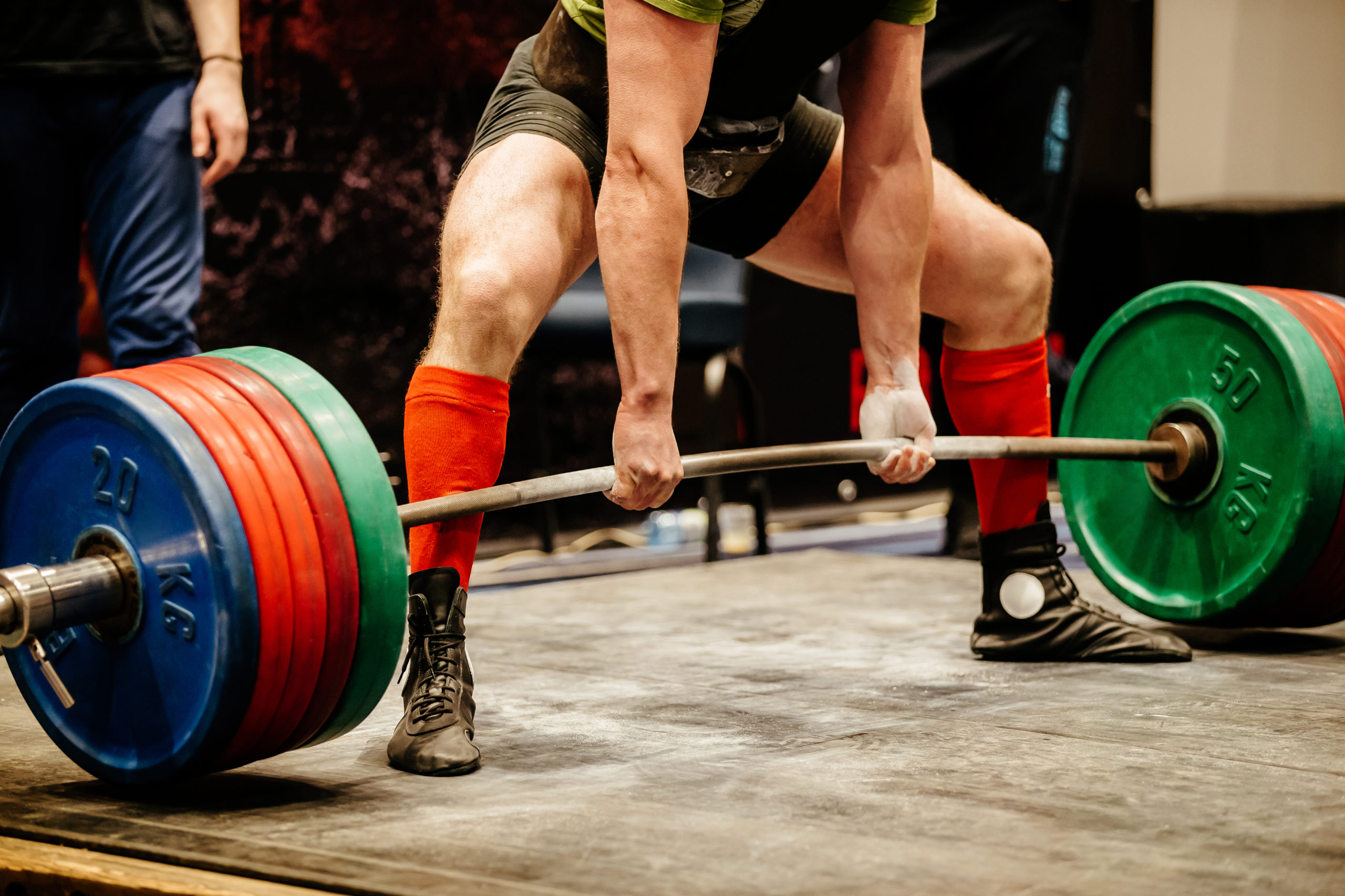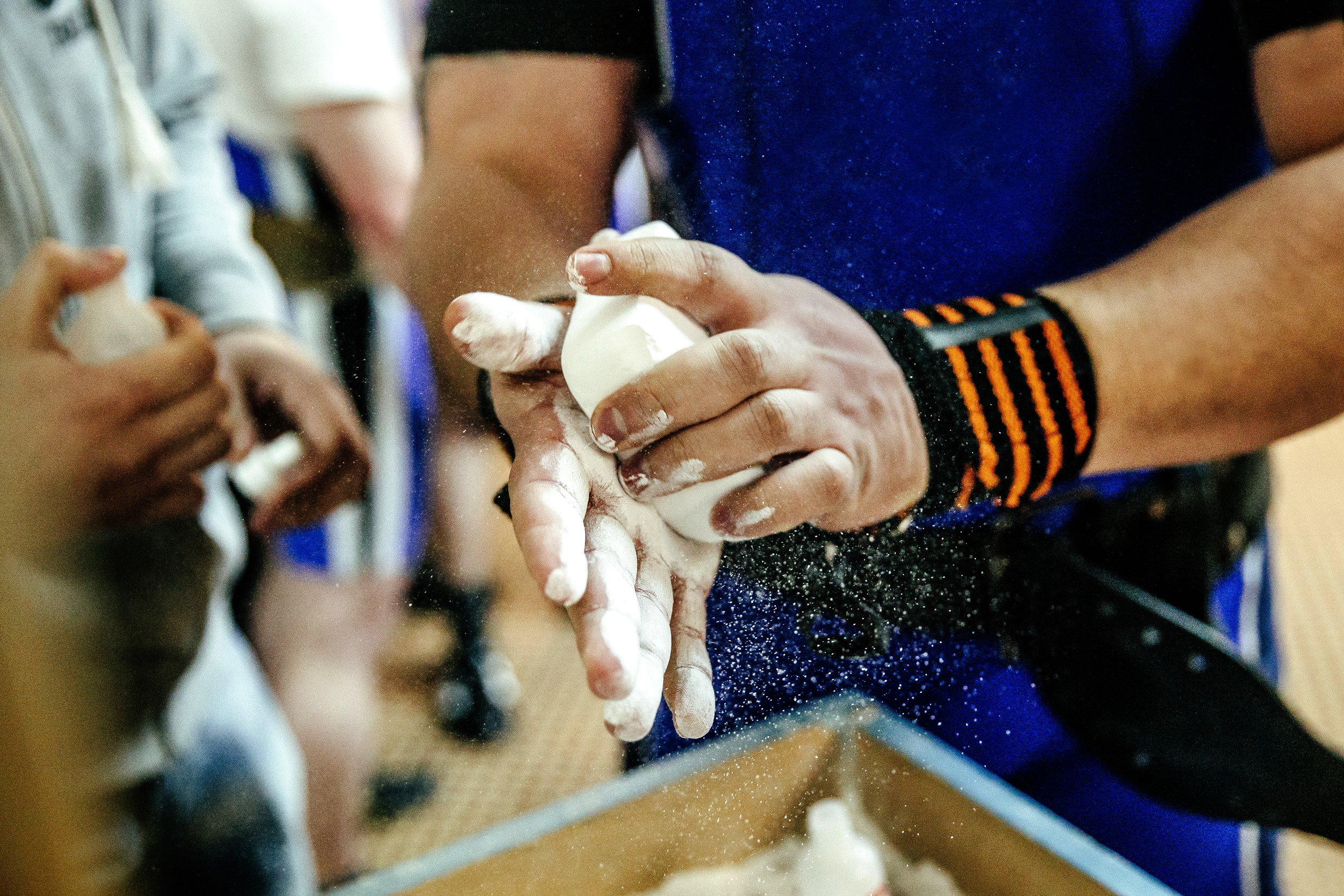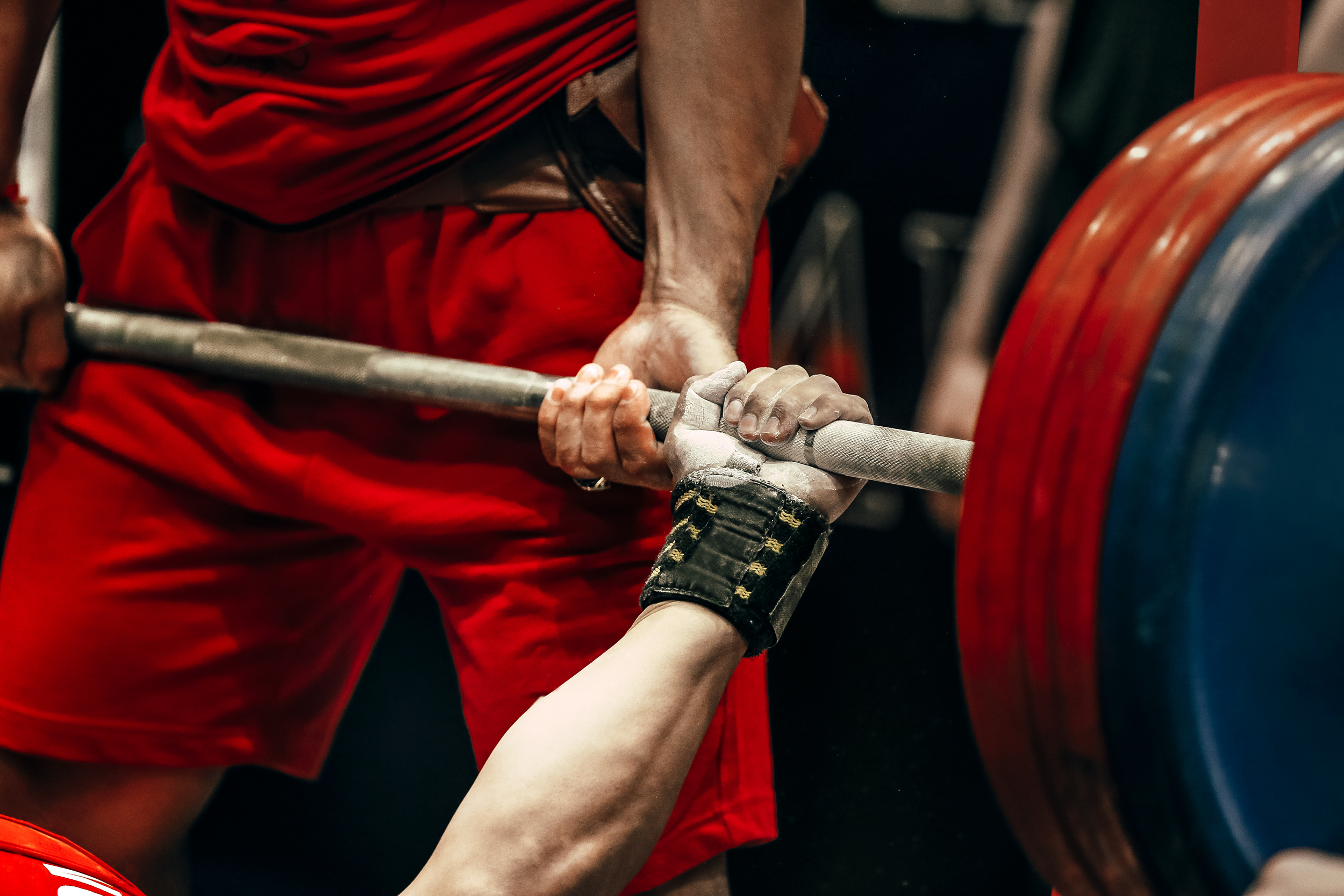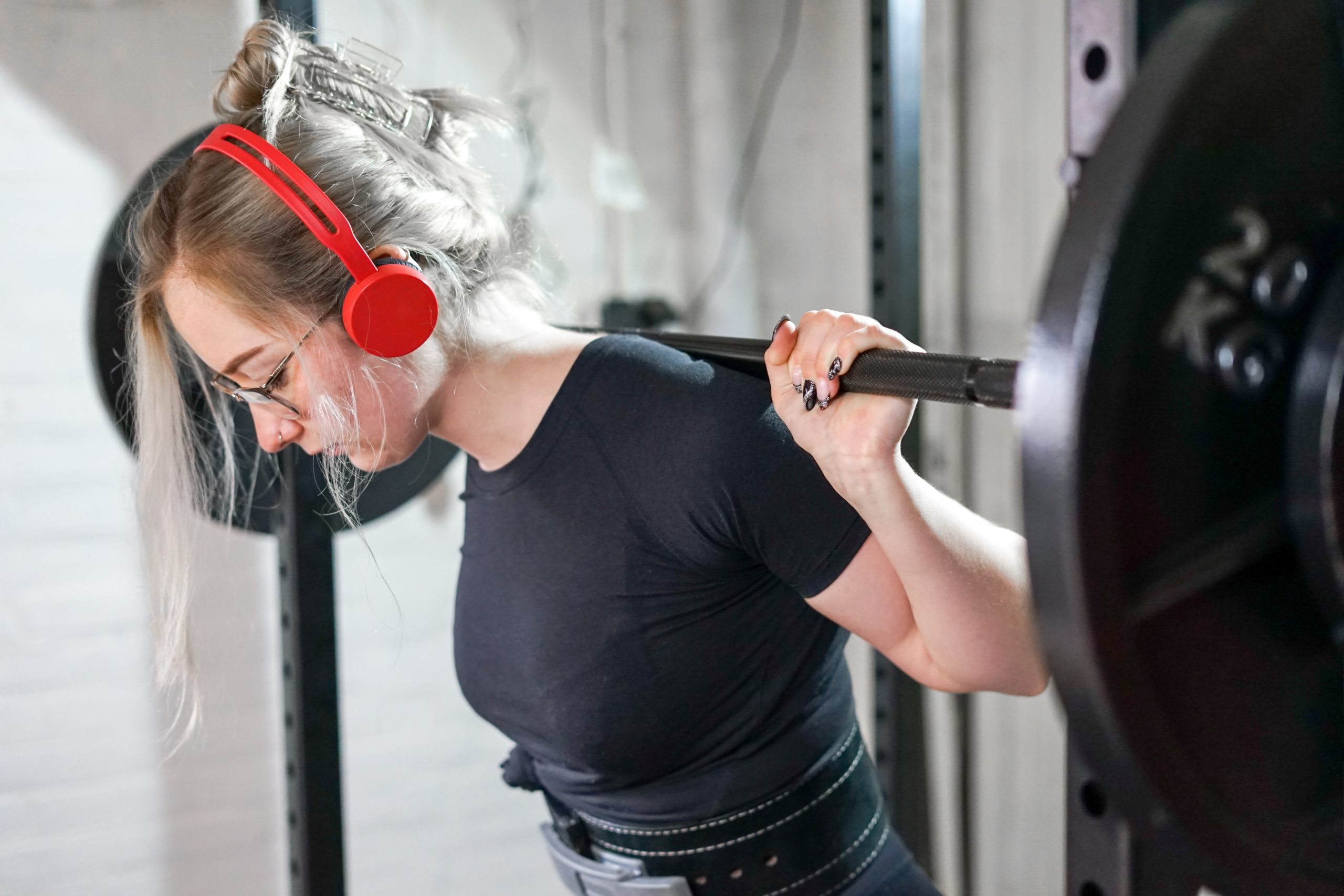There’s few feelings more frustrating than feeling like you hit your limit and future efforts are futile. But thankfully, exercise science and psychology provide tools and strategies for breaking through your powerlifting plateaus.
Three aspects of performance inform our strategies for breaking through a plateau. There’s the mental aspects, the physical aspects, and then there’s the holistic aspects that are somewhere in the middle.
If you optimize all three aspects of performance, you will surpass any plateau before you–be it in the gym or in life.
Key Point: In this guide, we will teach you how to leverage psychological and physiological principles to break through your limitations in the gym.
Quick Links
- Supplement with Protein and Creatine
- Use Progressive Overload in Your Workouts
- Slow Your Reps Down
- Take a Rest Week Before Attempting a PR
- Use Positive Psychology: Constructive Self-Talk
- Practice Thought-Stopping
- Surround Yourself with Driven People
- Optimize Health Holistically
1. Supplement with Protein and Creatine

Your muscles need fuel to function. Provide them with the right fuel and you boost performance beyond what you might normally be capable of. This is especially true in strength and resistance training.
Protein
Protein has been shown to simultaneously increase protein synthesis to produce muscle mass, while also reducing the rate of muscle tissue damage.
In other words a proper protein intake can improve bulking and muscle endurance, both of which are a powerlifter’s best friends.
- Make sure to get 2g of protein per day per pound of bodyweight.
- Optimal protein intake ensures that your muscle fully adapts to additional stimulus demands.
If you’ve hit a powerlifting plateau, you may need to increase your protein intake in order to boost protein synthesis and the rate at which your body recovers from your powerlifting routine.
Creatine
Creatine is one of the most well-researched pre-workout ingredients on the market. And the research provides a clear answer on whether it enhances the performance of powerlifters.
Creatine boosts muscular hydration, which in turn enhances the performance of muscle tissue. And it is one of few ingredients proven to improve growth of skeletal muscle tissue.
This translates to better powerlifting performance, and may provide the boost you need to break through your plateaus.
- Make sure to get 5-10g of creatine per day.
- Optimal creatine intake allows for more high-intensity bursts of power.
- It can take up to 3 weeks of creatine supplementation for muscles to become fully saturated.
Key Takeaway: While there are many pre-workout formulas that can boost powerlifting performance, protein and creatine are some of the most well-researched and effective. Make sure your intake is optimal if you’re looking to break through a plateau.
2. Use Progressive Overload in Your Workouts
Progressive overload is a strategy primarily used in weightlifting, which boils down to three elements.
- Weight
- Speed
- Number of repetitions
The only way to make real gains is through practicing progressive overload. Researchers have proven that workouts using progressive overload is strongly correlated with improving muscle volume and strength.
So how do you do this?
- Choose a weight where you can get 6-8 slow reps
- Work that weight until you can get 12 slow reps
- Move up in weight until your maximum is 6-8 slow reps
- Work that weight until your back up to 12 slow reps, rinse, and repeat
Key Takeaway: Engaging in the same workout over and over leads to plateauing. Use progressive overloading to train your body to break through them.
3. Slow Your Reps Down

Many weightlifters approach workouts with an overeager attitude. They’re hyped up and want to blast through their workout routine, however this can often hinder your gains.
Resistance training induces muscle growth by placing muscles under strain for extended periods of time. And as it turns out, increasing the timeframe of muscle tension increases the metabolic response and encourages increased muscle growth.
It is particularly interesting to note that researchers have shown that slow reps are a particularly effective for middle-aged and older adults. But how does this apply to powerlifters?
- Slower reps put more load on your stabilizer muscles
- Slower reps put less stress on joints
- Try 3 seconds up and 3 seconds down
- Always slow and controlled movements (nothing jerky!)
- Never let gravity do the work
Key Takeaway: Slowing your reps down will increase time under tension and can often lead to a break through on your powerlifting personal record (PR).
4. Take a Rest Week Before Attempting a PR
One thing to remember when pushing your body is that your energy is a finite resource. To give your best you need to let your body recover–both mentally and physically.
Why is this important for powerlifters?
When we’re working out full bore, we’re rarely ever at our peak because we’re also in the process of recovery.
Take a recovery week and see how your body responds on the backside
You can still stay active during a recovery week with lots of walking, some mobility work but make sure you don’t reach failure during workouts for the entire week. Though many experts suggest staying out of the gym altogether during rest weeks.
What is the Difference between Rest Weeks and Deload Weeks?
While the priority of a rest week is just that–rest. A deload week is more about reduced intensity of workouts. You still train but you reduce the volume of your regimen by:
- Dropping sets
- And/or dropping reps
- And/or reducing intensity
While rest weeks help your body recover, deload weeks set you up for increased performance in subsequent training sessions. It is recommended that powerlifters take a deload week every 6 to 12 weeks.
If you find yourself hitting a plateau and you don’t want to take a full rest week, then schedule a deload week instead.
Key Takeaway: When pushing yourself to achieve your powerlifting goals, be sure to utilize rest weeks and deloading weeks to help your body recover and prepare for increases to your lifting routine.
5. Use Positive Psychology: Constructive Self-Talk

If you follow a stellar physical and nutritional routine but still find yourself stymied by a powerlifting plateau, it’s time to visit strategies for mental improvements.
Have you ever surprised yourself in the gym? Sometimes when we least expect it, we perform at a level far above what we expected.
There’s many factors at play here, but mindset is a huge part of it.
To break through a powerlifting plateau, try practicing positive psychology:
- Reinforce a Mindset of Success: Think about your preparations, your hard work, and that you’re ready to take things to the next level.
- Believe It: Believe that you’re about to kickass
- Creates a Positive Feedback Loop: You tell yourself you’re going to do well, and then when you do well it becomes easier to believe positive self-talk next time.
- Think in Terms of ‘Dos’ Instead of ‘Donts’: If you’re told not to think of an elephant, that’s the first thing you’ll do. If you need to stay loose during your squats, tell yourself to “stay loose” instead of “don’t tense up.” Negative self talk has been linked to poor performance in numerous studies.
Key Takeaway: Framing is a key psychological principle that determines how our minds conceive of a goal. By framing your powerlifting goals with positive psychology you set yourself up for a mindset unimpeded by plateaus.
6. Practice Thought-Stopping
Just as positive thoughts act as an accelerant in reaching our goals, negative thoughts pump the brakes.
Sometimes the practice of positive thinking is not enough and we need to actively resist negative thoughts.
Here’s what you need to know about negative thoughts and how they relate to powerlifting plateaus:
- Automatic Negative Thoughts (ANTS): ANTS are negative thoughts that enter our minds automatically and often occur unconsciously. These often invade our minds at the worst time. When you’re stepping into the gym, pay attention to the negative thoughts that enter your mind during your workout.
- Plateaus are Often Mental: We tell ourselves we’ve just got the wrong genes or the wrong body type. But ironically, these kinds of thoughts keep us plateaued.
- A Quiet Mind is a Strong Mind: When we quiet automatic negative thoughts we free up bandwidth in our minds to tackle the challenge in front of us. Think of this as being in the zone.
Key Takeaway: The mind, much like a computer, performs best when space is freed up to focus on a given task. Be sure that negative thinking doesn’t take up too much space in your head when you’re trying to hit a new personal record.
7. Surround Yourself with Driven People

Different personalities will encounter different types of powerlifting plateaus–some more physical, some more mental.
Social individuals however, may find success in leveraging social energy in their workouts.
If you do your best when you have an audience or you when you have someone cheering you on, then you will benefit from optimizing the social elements of your workout routine.
Lean on Encouragement: When you’re trying to break through a powerlifting plateau, pair up with someone who pushes you to do your best.
Leverage Your Competitive Nature: If there’s someone who always outshines you in the gym, instead of shying away from them, ask to join them and see how far you can push yourself.
Build your Confidence: Workout with people who have confidence in you and who help you have confidence in yourself. This might mean finding new workout partners who do more than go through the motions.
Key Takeaway: Extroverted and highly social individuals stand to gain from optimizing the social elements of their workout routines. Conversely, more introverted individuals may find comparable successes by lifting in solitude.
8. Be Realistic about Your Growth
When an optimal mindset and peak physical routine fall short of your expectations, the expectations may be the problem.
Each person will experience the powerlifting journey differently, and will experience plateaus at different times.
It’s important to remember these principles:
Growth is Rarely Linear: Gains in powerlifting will necessarily be front-loaded towards the beginning of your efforts. So remember that your growth will have to slow down at some point.
Diminishing Gains do not Mean Diminished Success: Sometimes our bodies need a period of plateauing in order to build the foundation for future growth to the next level.
Self-Improvement Requires Accurate Self-Appraisal: As you push further into powerlifting, you’ll need to be increasingly on-point in all things–your diet, your techniques, your mindset. Be sure to always be real with yourself about where you might be lacking.
Key Takeaway: Sometimes progress is slow even when you do everything right. It’s important to remain grounded and realistic while aiming to improve as a powerlifter.
9. Optimize Health Holistically

If you focus entirely on performance in the gym, you might forget that your performance outside the gym is equally important.
If you’re doing everything else right, but you still encounter a powerlifting plateau, it’s time to examine your daily routine and habits.
Here’s some tips to improve day to day routines:
The Devil is in the Details: Powerlifters often focus too much on their gym routines and pre-workout regimens and in doing so forget the basics of healthy living. Are you getting quality sleep? Are you too stressed at the end of your day?
Do a Deep-Dive on Your Blood Work: Consult a sports nutritionist who is qualified to run blood panels to find out what’s going on chemically. Underlying allergies or sensitivity to certain chemicals can hugely impact workout performance.
Increase Quality of Rest: Sometimes in the effort to blast past a plateau we overwork ourselves and ironically leave our bodies ill-prepared for the requisite efforts needed to surpass it.
Key Takeaway: To take your self-improvement and physical optimization to the next level, take a bird’s eye view of your life and daily routine. Ask yourself what habits or routines might be hurting your overall health.
Related Articles
- The 18 Best Pre-Workout Supplements
- What Is The Correct Electrolyte Dosage for Pre-Workout, Intra-Workout, and Post-Workout?
- Which Pre-Workout Ingredients Increase Blood Flow and Pump?
- Which Pre-Workout Ingredients Increase Strength?
- Which Pre-Workout Ingredients Increase Endurance?
- What Does an Optimal Weekly Workout Routine for Maximum Fitness Look Like?
- How Protein Builds Muscle After a Workout
